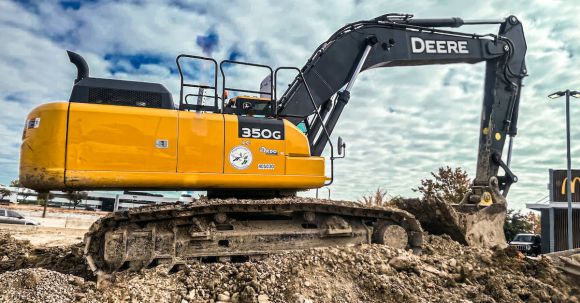Earthmoving equipment is an essential tool in many different industries. It is used to excavate, move, and grade soil and rocks, as well as to demolish buildings and other structures. Earthmoving equipment can range from small, hand-operated machines to large, motorized machines capable of moving large amounts of material. Whether you need to move a few cubic yards of dirt or thousands of tons of rock, the right earthmoving equipment is essential to the success of your project.
Types of Earthmoving Equipment
Earthmoving equipment is classified according to the type of task it is used to perform. The most common types of equipment are:
- Excavators: excavators are the most versatile of all earthmoving equipment, and are used to dig, move, and grade soil and rocks. They can also be fitted with attachments to perform more specialized tasks such as demolition or trenching.
- Trenchers: trenchers are used to dig narrow trenches for laying pipes or cables. They can be either wheeled or tracked, and can be fitted with specialized attachments to perform more specific tasks.
- Bulldozers: bulldozers are most commonly used to move large amounts of soil or rocks, and can also be used to grade surfaces and push heavy objects.
- Loaders: loaders are used to move large amounts of material, such as soil, rocks, or debris. Loaders can be fitted with attachments to perform more specialized tasks such as snow removal or digging.
- Scrapers: scrapers are used to remove material from a surface, such as asphalt or soil, and are typically used for larger jobs, such as road construction.
- Backhoes: backhoes are commonly used for digging trenches or holes, and can also be fitted with attachments to perform more specialized tasks.
- Graders: graders are used to grade surfaces, such as roads or fields, and can also be fitted with specialized attachments to perform more specific tasks.
Advantages of Earthmoving Equipment
Earthmoving equipment has many advantages over manual labor. Some of these advantages include:
- Speed: earthmoving equipment can move large amounts of material in a fraction of the time it would take to do the same job manually.
- Efficiency: earthmoving equipment is designed to be more efficient than manual labor, making it possible to complete jobs in a fraction of the time.
- Cost savings: using earthmoving equipment can save time and money by reducing labor costs and increasing productivity.
- Safety: earthmoving equipment can help reduce the risk of injury by eliminating the need for manual labor.
- Versatility: earthmoving equipment can be used to perform a variety of tasks, making it an invaluable tool for many industries.
- Reliability: earthmoving equipment is designed to be reliable and long-lasting, which can help save money in the long run.
Factors to Consider When Choosing Earthmoving Equipment
When choosing earthmoving equipment, there are several factors to consider. Some of these factors include:
- Type of job: the type of job you need to do will determine the type of earthmoving equipment you should use. For example, if you need to move large amounts of soil, a bulldozer may be the best choice.
- Size of job: the size of the job will determine the size of the equipment you need. If you need to move large amounts of earth, you will need larger, more powerful equipment.
- Cost: the cost of the equipment will be a major factor in your decision. If you need to move large amounts of earth, you may need to invest in more expensive, powerful equipment.
- Maintenance: the maintenance requirements of the equipment should be taken into consideration. Some earthmoving equipment requires regular maintenance, while other types may require less frequent maintenance.
- Environment: the environment in which you will be using the equipment should also be taken into consideration. Different types of earthmoving equipment may be better suited for certain environments.
Conclusion
Earthmoving equipment is an invaluable tool in many different industries. It is essential for completing projects quickly and efficiently, and can save time and money in the long run. When choosing the right earthmoving equipment for your project, it is important to consider the type of job you need to do, the size of the job, the cost of the equipment, and the environment in which you will be using it. With the right equipment, you can ensure that your project will be completed quickly and safely.






